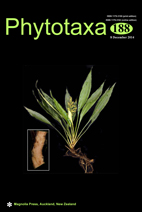Abstract
Based on morphological, genetic and ecological data, we describe new infraspecific taxa of the Azorean endemic Juniperus brevifolia. J. brevifolia subsp. maritima is an erect shrub or small tree, found in Flores, Terceira, Pico and São Jorge , in coastal scrubs below 100 m. J. brevifolia subsp. brevifolia occurs in all islands of the archipelago except Graciosa, between 300 and 1500 m. J. brevifolia subsp. brevifolia var. brevifolia is a small to medium tree found between 300 and 1000 m. J. brevifolia subsp. brevifolia var. montanum is a small prostrate shrub, common in mountain scrubs and blanket bogs, between 850 and 1500 m. The most striking morphological differences of subsp. maritima are the larger leaves, seed cones and seeds. Phenological patterns of the subspecies also differ, notably in the periods of seed maturation and pollination. The distribution of taxa within islands is peripatric. Coastal populations (subsp. maritima) are small and isolated from the usually much larger subsp. brevifolia populations, above 300 m. In subsp. brevifolia the varieties are parapatric, since their ranges are adjacent to each other, occurring together in narrow contact zones.

